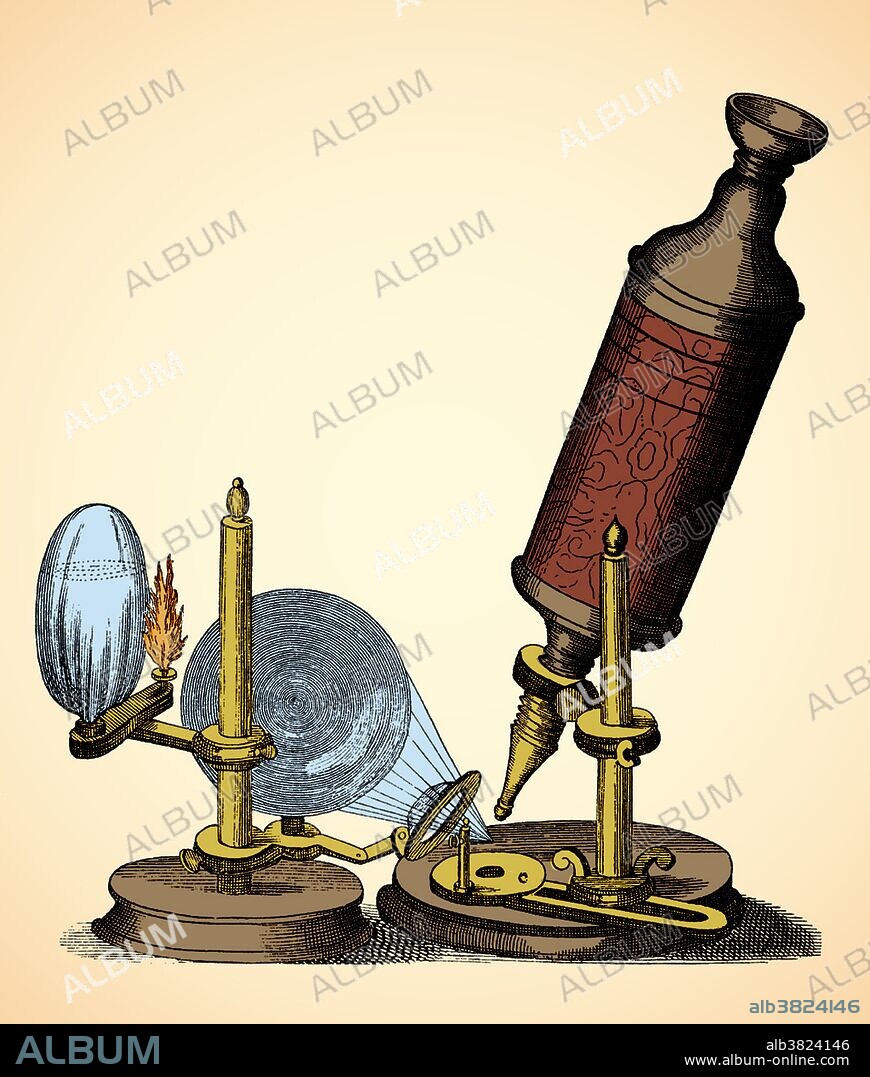alb3824146
Robert Hooke Microscope, 17th Century

|
Añadir a otro lightbox |
|
Añadir a otro lightbox |



¿Ya tienes cuenta? Iniciar sesión
¿No tienes cuenta? Regístrate
Compra esta imagen.
Selecciona el uso:

Título:
Robert Hooke Microscope, 17th Century
Descripción:
Traducción automática: El microscopio hecho a mano, con herramientas de cuero y oro que Robert Hooke usó para hacer las observaciones de Micrographia (1665), fue construido originalmente por Christopher White en Londres. El microscopio compartía varias características comunes con los telescopios de la época: una copa ocular para mantener la distancia correcta entre el ojo y el ocular, tubos de extracción separados para enfocar y una articulación esférica para inclinar el cuerpo. El tubo del cuerpo del microscopio se construyó de madera y/o cartón y se recubrió con cuero fino. Cuando los tubos de extracción estuvieron completamente cerrados, el microscopio midió seis pulgadas de largo. Hooke utilizó una lente objetivo biconvexa colocada en el hocico y dos lentes adicionales, una lente ocular y una lente de campo. Para combatir las imágenes oscuras de los especímenes, Hooke diseñó un método para concentrar la luz en sus especímenes. Pasó la luz generada por una lámpara de aceite a través de un matraz de vidrio lleno de agua para difundir la luz y proporcionar una iluminación más uniforme e intensa a las muestras. Esta imagen ha sido mejorada en color.
The hand-crafted, leather and gold-tooled microscope Robert Hooke used to make the observations for Micrographia (1665), was originally constructed by Christopher White in London. The microscope shared several common features with telescopes of the period: an eyecup to maintain the correct distance between the eye and eyepiece, separate draw tubes for focusing, and a ball and socket joint for inclining the body. The microscope body tube was constructed of wood and/or pasteboard and covered with fine leather. When the draw tubes were fully closed the microscope measured six inches long. Hooke used a bi-convex objective lens placed in the snout and two additional lenses, an eyepiece lens and a field lens. To combat dark specimen images, Hooke designed a method of concentrating light on his specimens. He passed light generated from an oil lamp through a water-filled glass flask to diffuse the light and provide a more even and intense illumination for the samples. This image has been color enhanced.
Crédito:
Album / Science Source
Autorizaciones:
Modelo: No - Propiedad: No
¿Preguntas relacionadas con los derechos?
¿Preguntas relacionadas con los derechos?
Tamaño imagen:
3569 x 4200 px | 42.9 MB
Tamaño impresión:
30.2 x 35.6 cm | 11.9 x 14.0 in (300 dpi)
Palabras clave:
ARTE • CIENCIA • COLOR • COLOREADA • DIAGRAMA • DIBUJO • FAMOSA • FAMOSO • HISTORIA • HISTORICO • ILUSTRACION • IMPORTANTE • INVENCION • MEJORA • MICROSCOPIO • OBRA DE ARTE • SIGLO XVII
 Pinterest
Pinterest Twitter
Twitter Facebook
Facebook Copiar enlace
Copiar enlace Email
Email
